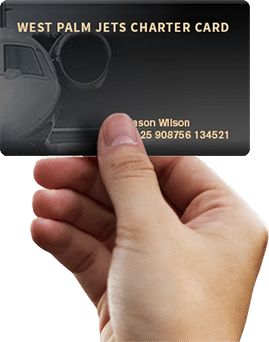
Know About The National Airspace System (NAS)
At the onset of commercial aviation, the National Airspace System (NAS) was established with the aim of moving air fleets form any particular place to another in a secure and conductive approach. When it comes to Safe air transport and sky movement, the United States has a leading reputation in the world.
According to the Federal Aviation Administration (FAA), over 7,000 aircraft can fly all at once in the sky in America and this digit is so likely to increase in the next 15years. But the problem is limited space to accommodate these aircraft. The FAA’s next generation Air Transportation System is ready to help out by reducing rate of emission, save fuel and decrease flight delay. But until this is put in use, the air current Airspace System will have to be bear it.
Airspace
According to the FAA, there are 4 major categories which are:
 1. Controlled airspace – this includes airspace around busy airports, along aircraft routes, and above 18,000 feet. The FAA further divides this airspace in classes A, B, C, D and E airspace, each having different dimensions and rules.
1. Controlled airspace – this includes airspace around busy airports, along aircraft routes, and above 18,000 feet. The FAA further divides this airspace in classes A, B, C, D and E airspace, each having different dimensions and rules.
2. Uncontrolled airspace -This is unlike the controlled one. It includes Airspace ‘s that are not controlled.
3. Special-use airspace -This are restricted, prohibited, warning and alert areas, as well as military operations areas (MOAs).
4. Other airspaces – i.e airspace used for temporary flight restrictions.
Air Traffic Control Centers
Controllers can assign routing relative to location fixes derived from latitude and longitude. There are various control units which the pilot communicates on an ideal flight. These centers include:
1. ARTCC – is the U.S. equivalent of an Area Control Centre (ACC). This facility was established to provide air traffic control service to aircraft operating on IFR flight plans within controlled airspace, principally during the en route phase of flight. When equipment capabilities and controller workload permit, certain advisory/assistance services may be provided to VFR aircraft.
2. TRACON – Terminal Radar Approach Control (TRACON). The primary responsibility of the TRACON is the safe, orderly, and expeditious flow of arrival, departure, and en-route traffic. TRACON may either use a single radar or many different airport surveillance radar (ASR) sites.
3. ARTCC – Air traffic control (ATC ) is a service provided by ground-based air traffic controllers who direct aircraft on the ground and through controlled airspace, and can provide advisory services to aircraft in non-controlled airspace. The primary purpose of ATC worldwide is to prevent collisions, organize and expedite the flow of air traffic, and provide information and other support for pilots.
4. FSS – Flight Service Specialist(FSS) communicate information about actual and forecast weather conditions for a specific flight, relay air traffic control instructions, assist pilots in emergencies, provide airport advisory service, and initiate and participate in searches for missing or overdue aircraft.
Technology
Over the years,the aviation industry has made a great number of innovative technologies to ensure safety flight and enhance easy communication between the pilot and the controllers. Few among many of the technologies includes:
-
Radar – Sure, the airlines are dying to replace it with GPS technology, but for decades it’s been radar that helps air traffic controllers locate and track planes up to 200 miles away. Would our modern air traffic infrastructure exist without it? Probably not.
-
CPDLC – Controller Pilot Data Link Communications also referred to as controller pilot data link (CPDL) is a means of communication between controller and pilot, using data linkfor ATC communication. At the highest level, the concept is simple, with the emphasis on the continued involvement of the human at either end and the flexibility of use.
-
GPS – GPS provides pilots with a reliable and accurate navigation source. It provides them with the ability to fly point-to-point instead of following ground-based radio navigation that require longer flight paths between airports.
-
Winglets – This is a small upward-pointing extensions at the tips of aircraft wings to reduce drag, improve climbing performance,increase range, and make flight more fuel efficient. Most airlines have added winglets across their fleets.
-
The hub and spoke system – passengers hate having to make stopovers at jam packed airports controlled by a single airline. Though, they’re expensive to fly into and delay prone, but hub airports are a big part of the reason that you have 20 flights a day to choose from when flying between most large American cities.
The Next Generation Air Transportation System
The vision of the next Generation program includes :
-
Ehnace travel experience for passengers and operators
-
Fuel savings for aircraft operators
-
Reduction in emissions due to more direct and efficient
-
Reduce separation minimums
-
Reduce congestion
-
Better communications across the airspace system and it’s users
-
Standardized access to weather information
Disclaimer: All Aircraft And Air Carriers Selected By West Palm Jets are fully Certified by The Federal Aviation Administration and The U.S. Department of Transportation under part 135 regulations. Carriers are Solely Responsible for The Air Transportation Arranged on Behalf Of West Palm Jets’ Clients. West Palm Jets Does not OWN or Operate Any Aircraft. West Palm Jets is not a direct or indirect Air carrier. All flights chartered through West Palm Jets are Operated by Part 135 Air Carriers.


